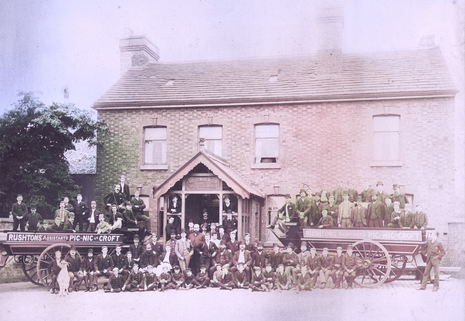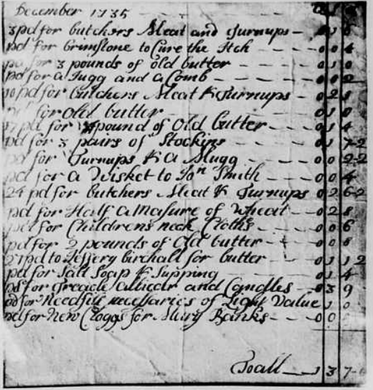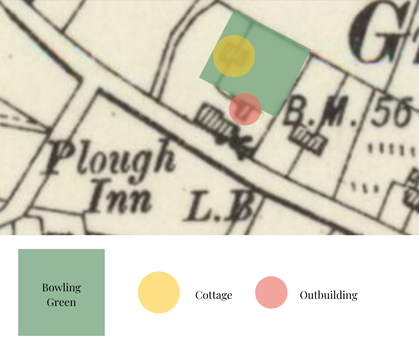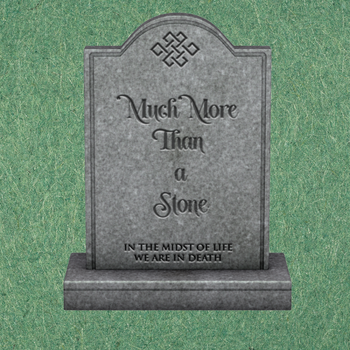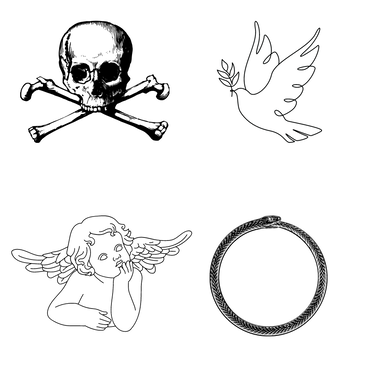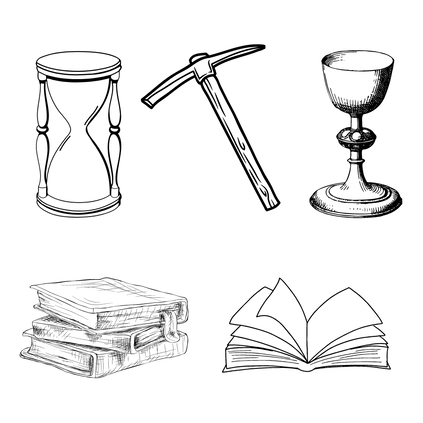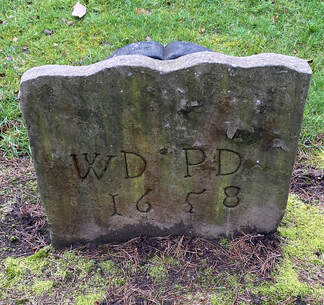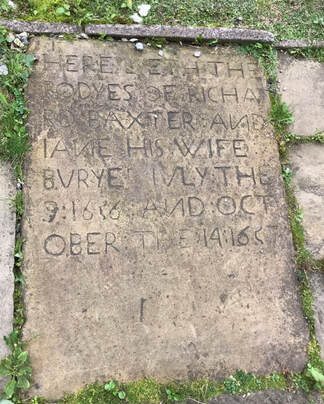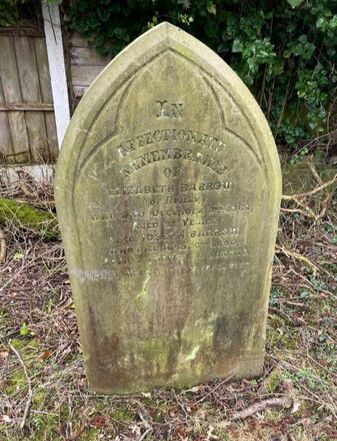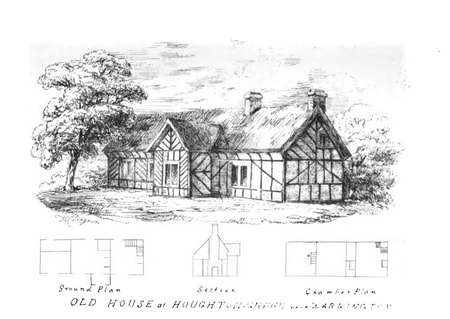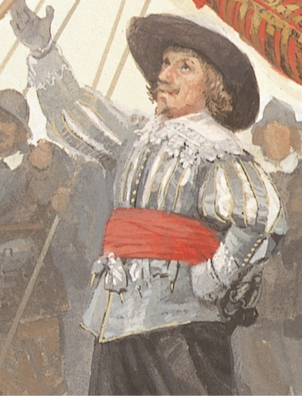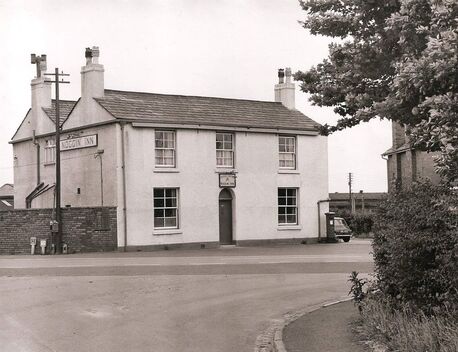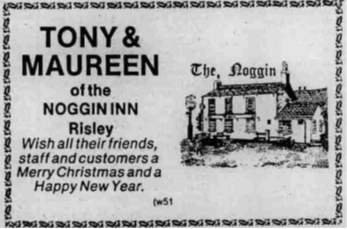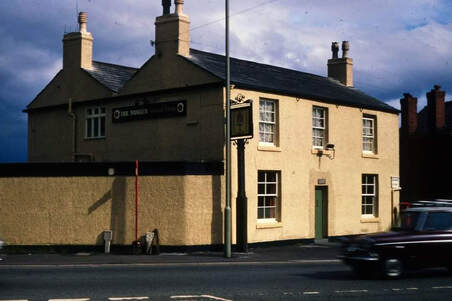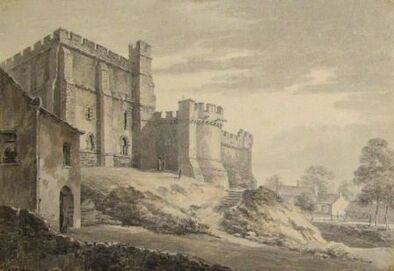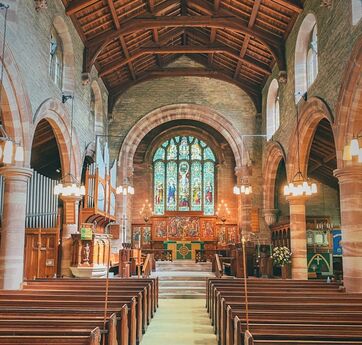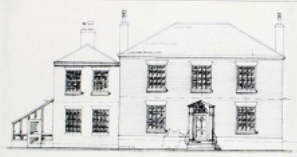|
Liverpool Daily Post
9th January 1969 A fifty-five-year-old railway signalman is staging a lone battle against Lancashire County Council.
He is also taking on the divisional education committee of South West Lancashire, Warrington Rural Council and the Parish Council on which he has served for the past 24 years. Mr Jim Hampson, of Oak Street, Croft, will be the sole objector at a public inquiry at Warrington next Wednesday. And yesterday he received a letter from Warrington Rural Council asking him to withdraw his opposition to the siting of a new primary school in Mustard Lane, Croft. But last night Mr Hampson said he had no intention of withdrawing. "This is a matter of principle," he said. "No-one else has been granted planning permission to build on any site at Croft earmarked for Green Belt, and I cannot see why the rules should be broken now when land originally chosen for the new school is still available half a mile away from Mustard Lane." So, the battle of Mustard Lane will go on. For months Mr Hampson, a member of Croft Parish Council, and chairman of Warrington Rural Parish Council's Association, has been campaigning against the decision to build the urgently-needed primary school opposite to the present school in Mustard Lane. In the first instance the county council suggested that it should go up on the site in Smithy Lane which is owned by Warrington Rural Council. The rural council, however pointed out that they had plans for the building of sheltered accommodation for old people on this site. This was a proposal which evoked a sharp reaction from Mr Hampson. "As much as I appreciate the needs of old people, a new primary school is much more urgently required," he said. But the county council eventually agreed with the rural council, the divisional executive committee and Mr Hampson's fellow members of Croft Parish Council that the Mustard Lane site was suitable. Since then, the railway-man has organised a petition signed by 310 Croft householders and originally he found a powerful ally in the Ministry of Agriculture who supported his contention that the Mustard Lane site should be retained for agricultural purposes. As a result, the Ministry of Housing and Local Government ordered next week's public inquiry. This week, however, it was learned that the Ministry of Agriculture had withdrawn their objection, and the rural council wrote to Mr Hampson pointing out that he was now the only objector. "It cost them 3s 5d to send the letter by registered post asking if I would be prepared to withdraw my objection," said Mr Hampson. "I have no intention of doing so. I fought against the encroachment of the Warrington New Town into the Croft green belt area and I think that the same thing applies in this case especially as the site originally chosen for the school in Smithy Lane is still available.” For those who don't live locally, the school was built on Mustard Lane eventually! Remembering World War IIAfter last month’s D-Day anniversary, it came to light that there are no WWII deaths remembered on Croft Village Memorial Hall. I spent some time looking up the details of those fallen in the second world war, who had lived locally.
I found the information for three of them, which I think should be added to the memorial. The missing WWII dead are: Driver James Swindell Of Lymm View, Risley (Formerly Risley Primitive Methodist Chapel) Died of wounds Italy 23/10/1944 Aged 21 Lieutenant Richard Moores Of 3 Lords Lane, Risley Died Italy 31/10/1943 Aged 29 Lance Bombardier James (Jim) Wood Of Lord Street, Croft Worked at Oak Tree Farm for Lewis Birchall Died Algeria 05/12/1942 Aged 35 Feedback has suggested that a handful of people think that the Memorial Hall was built originally as a WWI memorial and it should stay that way. However, the majority feel the names should be added. If it is decided that the Memorial Hall should stay as a WWI memorial, then we really shouldn’t be holding WWII services there and could perhaps consider Christ Church in future. Remembering World War IAfter looking much more deeply into the names of the fallen, there are some local names missing from the WWI list. The memorial hall plaque, which was unveiled in 2014, has the same 20 men as are listed on the Christ Church memorial. Christ Church on Lady Lane has two official
Commonwealth War Graves Commission graves from WWI. Both soldiers are buried in the churchyard. Both died from wounds obtained in WWI. Both died after the war had ended. Only one of them is on the memorial list. Gunner Samuel Yates is not included on the memorial. (The plaque in the church was unveiled whilst he was still alive, so it’s clear why he was missed off at first. I can only assume that by the time the plaque was next updated in 1945, a whole different generation was in charge, and he was sadly forgotten.) There are three WWI gravestones at Croft Unitarian Chapel, one being an official Commonwealth War Graves Commission grave (Harold Houghton).
Harold Houghton is rightly named on the Christ Church and Memorial Hall plaques. The other two are Lance Corporal William Whittle and Private George Daintith. George Daintith’s stone was originally in the grave space of Harold Houghton’s grave and reads IN MEMORY OF HAROLD’S COMRADE PRIVATE GEORGE DAINTITH LIVERPOOL REGIMENT KILLED IN FRANCE JUNE 25TH 1916 I can’t imagine how Harold would feel knowing that he was named on the village memorial whilst George wasn’t. William Whittle is named on his parent’s grave, with the quote ‘DUTY NOBLY DONE’. The Risley War Memorial
This memorial was re-erected after the demolition of Risley Presbyterian Church in 1971. The triangular stone had previously topped the clock of Risley Presbyterian School (Closed as a school in 1932) John Winterburn writes: ‘…the school was closed and became merely a polling station. Now (1974) there is nothing but the site, and a wooden hut on it at election times. Two relics only remain. Croft Parish Council have kept the War Memorial Tablet and old clock which were part of the school fabric. Someday, they hope to erect them again in another place.’ Taken from A History of Education in Culcheth. Named on the memorial from WWI are: Harold Houghton George Daintith William Whittle Norman Gibbins Again, only one of these names is on the Plaque at the Village Hall and in Christ Church. So altogether, there are four names missing from the Memorial Hall Plaque which I believe should be on there. Gunner Samuel Yates Private George Daintith Lance Corporal William Whittle Gunner Norman Gibbins The Church may have had (and may still have) other reasons for not including these names, but as the Memorial Hall is for the use of all residents and is in the centre of the village, I think the Croft community should add the missing names from WWI to the Village Hall memorial. Alan Sharpe’s book states that the names on the church plaque were taken from the Croft 1901 census. This can’t be true for several reasons: - The records were sealed until 2001 - If they had special access to a census, the 1911 census would be much more accurate than 1901 - Harold Houghton lives in Leigh, not Croft on the 1901 census, yet still made it onto the list - Even on the 1911 census, both Harold Houghton and George Daintith lived at the Old Noggin Inn in Risley, yet Harold was on the list of Croft war dead, without George. Why Should We Add Missing Names?
Adding missing names ensures that the memorial accurately reflects all those who sacrificed their lives. It honours every individual's contribution and maintains the integrity of the historical record. Every person who served and died deserves recognition. Updating memorials to include missing names shows respect for those individuals and acknowledges their sacrifice. For the families and communities of those whose names were initially omitted, adding their loved ones' names can provide a sense of closure and recognition. It validates their loss and ensures their relatives are remembered alongside their peers. A complete memorial serves as a more comprehensive educational tool, providing a fuller picture of the war's impact on the community. It helps future generations understand the breadth of sacrifice made during the wars. Omissions may have occurred due to oversight, lack of records, or other reasons. Correcting these omissions is a matter of historical justice, ensuring that every individual's contribution is duly noted and remembered. Updating memorials to reflect all who served and died maintains the memorial’s role as a true representation of the community's history and collective memory. It reinforces the values of inclusivity and thoroughness. I will be approaching the committee for the Memorial Hall with this information and would also welcome any feedback from residents. How did the carnival start?Sports competitions and children’s fun days were held often in Croft, especially over the summer during the early 19th century.
The sports days were usually for serious contenders, with separate days for children and adults. They were advertised in newspapers around Lancashire, with the results being published afterwards. As times changed, a band was added to the sports day for some extra enjoyment. Leigh Chronicle & Weekly District Advertiser 17th August 1878 CROFT ATHLETIC SPORTS THIS DAY (SATURDAY) AUGUST 17TH 1878. OVER 150 ENTRIES. GOLBORNE BRASS BAND in attendance for Dancing. JOHN DAINTETH, Hon. Sec. The children’s fun day and the sports day were kept separate and had different committees. Leigh Chronicle & Weekly District Advertiser 9th September 1892 CROFT CHILDREN’S TREAT This popular treat, which is looked forward to with evident interest by the children and young people of the parish, took place on Saturday afternoon under very unfavourable circumstances with regard to the weather. The committee this year consisted of Messrs H Hankinson, J Hatton, W Sanderson, R Sanderson, and H Shaw, Mr S Stretch being the hon. treasurer and Mr. S Taylor the hon. secretary, whose arrangements gave every satisfaction. The children assembled at the Board School at one o’clock, and at two a procession was formed, and, headed by a banner and the Leigh Volunteer Band, they paraded the village. At four o’clock they sat down to an excellent tea, in the schoolroom, which was thoroughly enjoyed, and afterwards nuts and sweets were distributed to them. The weather being so unpropitious it was deemed advisable to postpone the usual sports until next Saturday afternoon. There was a large attendance at the treat, and the usual complement of merry-go-rounds, swing-boats, nuts, sweets, and toy stalls, etc, which were fairly patronised. CROFT SPORTS AND GALA The annual athletic sports were held in a field near the Horse Shoe Inn, Croft, on Saturday Afternoon. The weather was very unfavourable for the occasion, heavy showers prevailing at intervals throughout the day, which made the ground very wet and slippery, and also, no doubt, reduced the attendance, which was, however, a pretty good one. There was a good number of entries for the various events, namely 73. The contests were very keen and some good running took place considering the wet state of the ground. Croft Horticultural SocietyIn 1899, Croft Horticultural Society started promoting/sponsoring the sports events and this seemed to continue, at least annually, until 1911, when coronation celebrations took over. Other entertainment was provided, though the focus was still sports.
Leigh Chronicle & Weekly District Advertiser 8th August 1902 CROFT ATHLETIC SPORTS The third annual athletic sports promoted by the Croft Horticultural Society was held on Saturday in a field kindly placed at the disposal of the committee by Mr. L. Birchall. The events in the programme (all open) and for which there were about 150 entries, were: 100 Yards Flat Race (Scholars)
1st Prize – Suit of clothes by Messrs Dolan’s, Warrington – Won by J Eaves, Earlestown 2nd Prize, Biscuit barrel – Won by J Shaw, Croft 3rd Prize, Keyless watch – Won by E Taylor, Croft 120 Yards Flat Race (Men) 1st Prize – Chiming clock by Messrs Ind, Coope and Co., Burton-on-Trent – Won by S Houghton, Warrington 2nd Prize, Electro plated jelly dish – Won by J Ashcroft, Golborne 3rd Prize, Butter dish – Won by J Straw, Warrington Half Mile Bicycle Race 1st Prize – Gladstone bag – Won by H Devenport, Stockton Heath 2nd Prize - Timepiece by Messrs Cook and Co., Leigh – Won by G Ball, Leigh 3rd Prize - Gold medallion by Mr J S Darwell, Leigh – Won by J Davis Lowton Mile Bicycle Race 1st Prize – Set of carvers – Won by G Dandy, Rixton 2nd Prize - Alarm timepiece – Won by G Ball, Leigh 3rd Prize - Electro plated teapot – Won by M Quinton, Bamfurlong 220 Yards Flat Race 1st Prize – Pair of trousers by Messrs Dolan’s, Warrington – Won by J Adams, Earlestown 2nd Prize - Electro plated butter dish – Won by J Ridyard, Golborne 3rd Prize - Table brush and tray– Won by T Chadwick, Daubhill One Mile Flat Race 1st Prize – Six bottle cruet – Won by A Holland, Lowton 2nd Prize - Barometer – Won by A Hill, Warrington 3rd Prize - Pair of pictures by Mr Gregory, Leigh – Won by M Jennings, Croft 4th Prize – Woollen sweater – Won by H Wilson, Earlestown The weather was very unfavourable, but these sports which are becoming very popular, draw a large number of spectators, about 500 paying for admission into the field.
The attractions of the sports, coupled with Cook’s swing boats, etc. on the playground, and also numerous picnics to the various hotels, caused the village to present quite a lively and animated appearance. The committee who were appointed and carried out the arrangements in an admirable manner were: Judges, Messrs H Shaw, T Hodgkinson and J Daintith; Starters, Messrs A J Owen and C Allen; Stewards, Messrs T Abbey, T Fazakerly, H Hankinson, J Lodge, R Ingham, and I singleton; Hon. Secretary, Mr S Taylor; General secretary, Mr I Cawthorne. It has been decided to have the same programme of events repeated on the day of the horticultural exhibition on September 6th. Leigh Chronicle and District Weekly Advertiser 26th August 1910 CROFT ATHLETIC SPORTS The eleventh annual amateur athletic sports were held on Saturday in a field near the Horse Shoe Inn, Croft, which had been placed at the disposal of the committee by Mr. James Gleave. Rain fell during the early part of the day, and no doubt accounted for the decrease in the number of spectators. The weather was, however, fortunately fine during the proceedings. There were 277 entries, and about 300 persons paid for admission. There were some very close contests, especially in the boys semi-final and the half mile bicycle race, in the latter only half a wheel separating the first and second. Croft Carnival as it is TodayAfter the 1911 coronation celebrations, the annual events took a break and then in 1914, war broke out.
There are some events that took place during the war years, but understandably they were kept low key and focused on the children. Huge festivities took place in 1919 to celebrate peace and people must have tried to carry on and come to terms with the horrors they had faced. 1925 - 2025 100 YEARS! In 1925, it was decided to hold a mixed field fete with a procession including floats, bands, morris dancers, and coaches. Bad weather delayed the start, but it did go ahead. It was so popular that it was decided to be held again the next year. The athletics were again incorporated into the day and gradually the whole event was known as the Croft Carnival. The second world war meant another break from celebrations, though it was held consistently after that up until the 1960’s. A Carnival Committee was set up in order for the event to take place in 1972 and it ran continually until the Covid lockdown of 2020 stopped things again. 2025 will be 100 years since the first “Croft Carnival” including parade, picnics and all the fun and games. The committee are working hard to ensure it is one of the best yet! If you can help or contribute to the 100 year celebrations, please get in touch with [email protected]. Three Extra Pubs in Croft?Sometimes, a fresh pair of eyes is all you need. I recently printed out and read an article relating to Croft Unitarian Chapel on it’s opening day, which I have had for over a year.
I was astonished to see the following sentence: 'After the service, the congregation dined at the Gibraltar Inn, Croft.' The newspaper is the Manchester Times and it is dated Saturday 5th October 1839. At first, I thought this must be a mistake by the journalist and so I looked into it further. I found another mention of the Gibraltar Inn in the Manchester Courier dated Saturday 19th September 1846. This was in the marriages section. 'On the 13th inst., at Croft cum Southworth, by the Rev. T.P. Kirkman, Rector, Mr. William Vernon, of Liverpool, Coal Agent, to Elizabeth, second daughter of Mr. James Owen, of the Gibraltar Inn, Croft.' The correct name of the rector at Christ Church confirms the location, but more importantly, the mention of the Owen family shows that it must be what is now the General Elliot. (See The Story of Enoch William Sankey) I double checked the church records and indeed, James Owen, father of the bride, is listed as ‘Farmer and Publican’. Whilst searching for any other mention of the Gibraltar Inn, I came across the Accounts and Papers of the House of Commons 1876. This had an extremely interesting and detailed list of the local Friendly Societies registered. (I will write a separate post in the near future with more information on these societies.) Listed was the Croft Junior Female Friendly Society, with it’s registered office as ‘Admiral Rodney Inn, Croft, Warrington’ established 1854. There was no further information on this and newspapers have no mention of it so far. Was this another name for the General Elliot? Lastly, those of you who have read the book by Alan Sharpe on the history of Croft, will know that he mentions the 1824 record of a pub on Lord Street called the General Wolfe Inn, with the only other pub at the time being the Joiners Arms. This was also under the name of James Owen. So, I think it’s safe to say that in 1824, the General Elliot was the General Wolfe Inn. From at least 1839 to 1846 it was known as the Gibraltar Inn, and it’s very possible at another time it was the Admiral Rodney Inn. In 1851 the England Census return shows the name as the General Elliot with William Norbury as Licensee. We know the pub has had many refurbishments and different owners, but it seems the old names were forgotten, until now. Where is/was the cottage?
|
AuthorCheyvonne Bower Archives
July 2024
Categories
All
|







